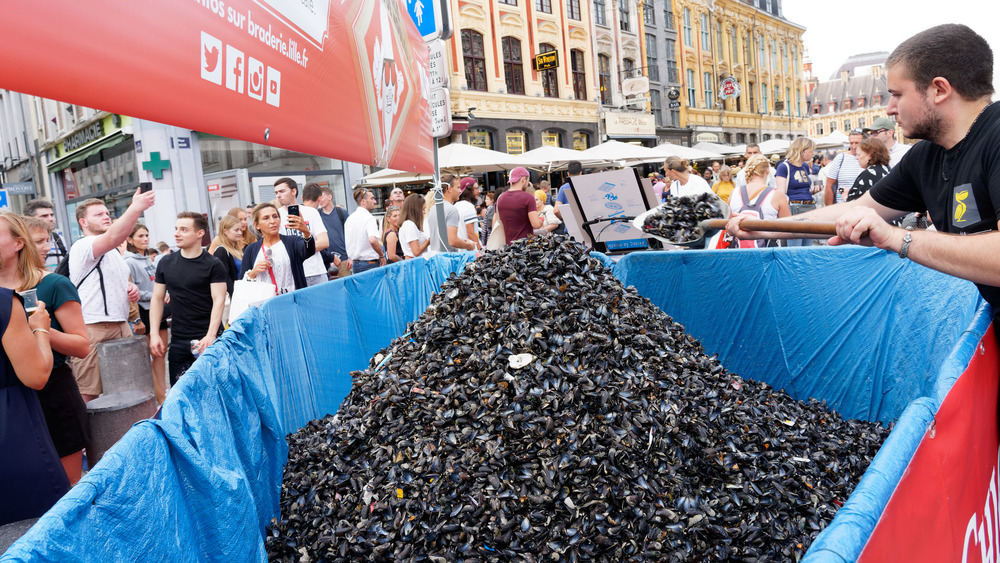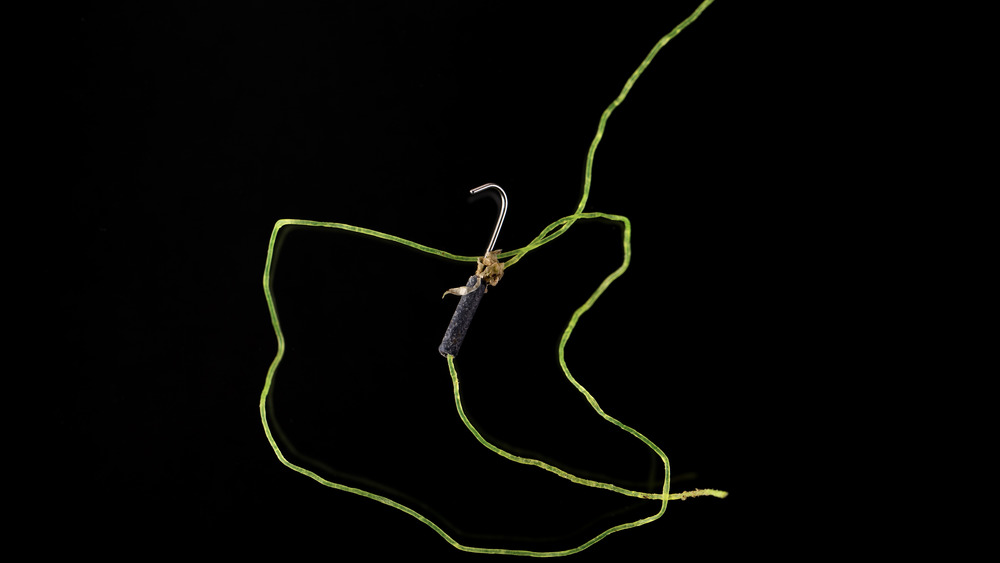The Concerning Information This Study Just Revealed About Mussels
"If you eat mussels, you eat microplastics," begins a press release from the University of Bayreuth that explains how they have established this once local fact as a global phenomenon. Studying the European blue mussel, the greenshell mussel, the undulate venus, and the Pacific venus clam, all of which one could procure easily enough in a store, the team discovered the presence of microplastics of sizes between 0.003 millimeters and 5 millimeters in all specimens which were farmed and harvested from all over. The amount of microplastics found within the mussels ranges between 0.13 and 2.45 microplastic particles per gram of meat.
The term "microplastic," according to the National Ocean Service, refers to any piece of plastic smaller than 5 millimeters. They originate from the breakdown of larger pieces of plastic waste or are already microbeads, which are microplastics used as exfoliants in beauty products. Essentially, they come from everything. The reason mussels contain so much plastic is that they filter the microplastics out of the water along with their food.
Other research from this year has shown that microplastics are amassing in other sources as well. Plastic Soup Foundation, a single-issue organization focused on removing plastics from both the world's waters and our bodies, highlighted two studies, one conducted by the University of Catania and the other a collaboration between the Yanthai Institute of Coastal Zone Research and Leiden University, in June. Both studies suggest that fruits and vegetables may contain microplastic by absorbing contaminated water through their roots.
Stuck in plastic
As microplastics enter mussels, apples, and carrots, they enter us too as we eat those mussels, apples, and carrots or drink contaminated water ourselves. Microplastics and their millimeter measurements, however, remain quite abstract. While we may eat two 5-millimeter-sized microplastics in a gram of mussel meat, we may just as easily struggle with visualizing what that actually means. Fortunately – or not - Reuters attempted to rectify this problem by producing a piece visualizing just how much plastic we ingest. Based on a 2019 study done by WWF International that concluded we may consume a credit card's worth of plastic a week, Reuters extrapolates that over the course of a month, we eat the equivalent of a 4x2 Lego brick and a plastic firefighter's helmet in a year.
By the end of our lives, we could have unwittingly munched through 44 pounds of plastic. "It could pass into our blood or lymphatic system and end up in our organs," Malcolm Hudson, a professor of environmental science at the University of Southampton, muses. In January, Discover magazine picked up on these possible health risks and ways to mitigate them. However, it was unclear how dangerous the dosages we inflict upon ourselves are. That said, it may depend on the type of plastic involved as some are more poisonous to humans than others. So, the clearest course of action, as Discover concludes, is to remove plastics from our environment and our general consumption as much as possible.

